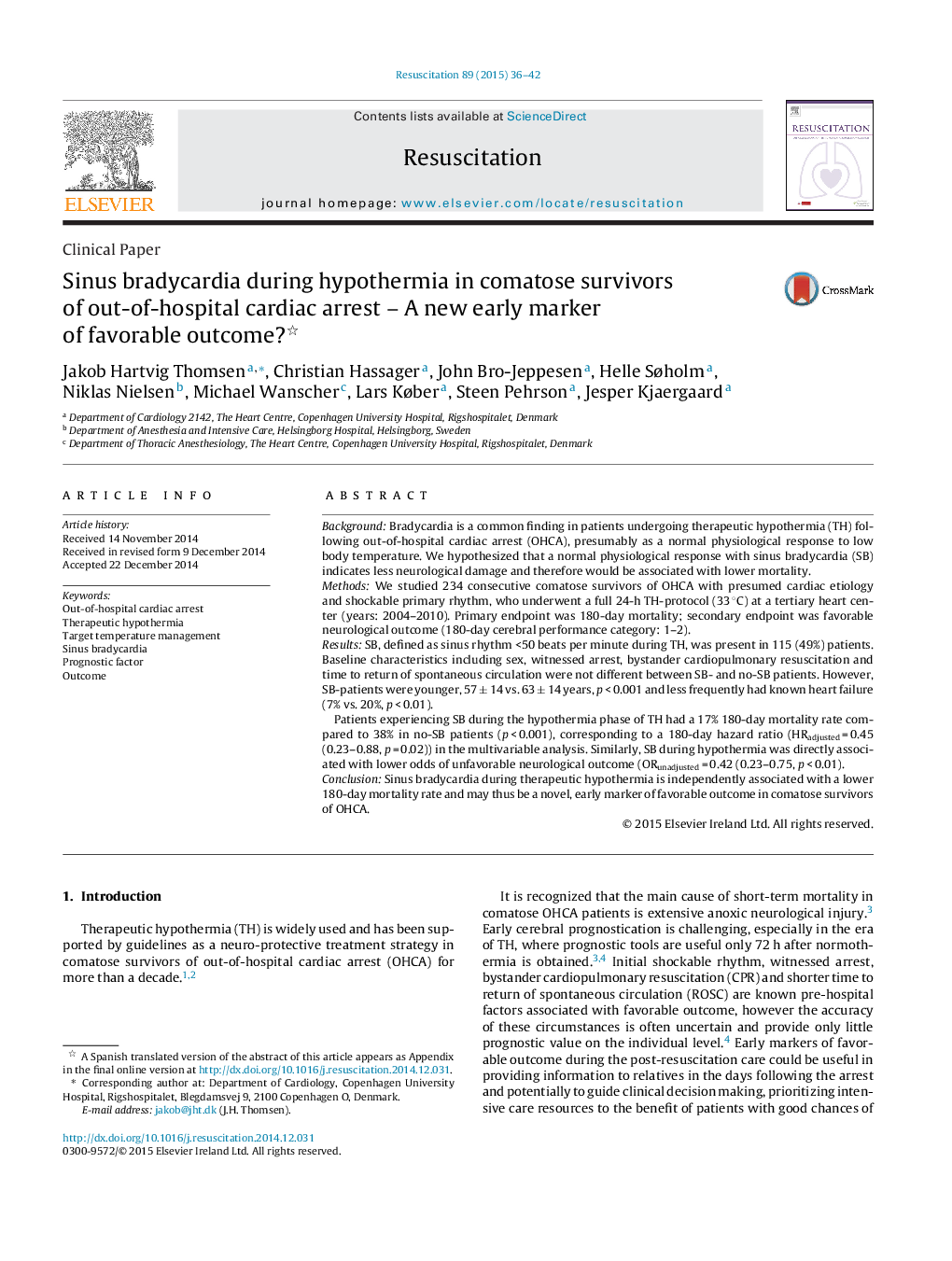| Article ID | Journal | Published Year | Pages | File Type |
|---|---|---|---|---|
| 5997945 | Resuscitation | 2015 | 7 Pages |
BackgroundBradycardia is a common finding in patients undergoing therapeutic hypothermia (TH) following out-of-hospital cardiac arrest (OHCA), presumably as a normal physiological response to low body temperature. We hypothesized that a normal physiological response with sinus bradycardia (SB) indicates less neurological damage and therefore would be associated with lower mortality.MethodsWe studied 234 consecutive comatose survivors of OHCA with presumed cardiac etiology and shockable primary rhythm, who underwent a full 24-h TH-protocol (33 °C) at a tertiary heart center (years: 2004-2010). Primary endpoint was 180-day mortality; secondary endpoint was favorable neurological outcome (180-day cerebral performance category: 1-2).ResultsSB, defined as sinus rhythm <50 beats per minute during TH, was present in 115 (49%) patients. Baseline characteristics including sex, witnessed arrest, bystander cardiopulmonary resuscitation and time to return of spontaneous circulation were not different between SB- and no-SB patients. However, SB-patients were younger, 57 ± 14 vs. 63 ± 14 years, p < 0.001 and less frequently had known heart failure (7% vs. 20%, p < 0.01).Patients experiencing SB during the hypothermia phase of TH had a 17% 180-day mortality rate compared to 38% in no-SB patients (p < 0.001), corresponding to a 180-day hazard ratio (HRadjusted = 0.45 (0.23-0.88, p = 0.02)) in the multivariable analysis. Similarly, SB during hypothermia was directly associated with lower odds of unfavorable neurological outcome (ORunadjusted = 0.42 (0.23-0.75, p < 0.01).ConclusionSinus bradycardia during therapeutic hypothermia is independently associated with a lower 180-day mortality rate and may thus be a novel, early marker of favorable outcome in comatose survivors of OHCA.
